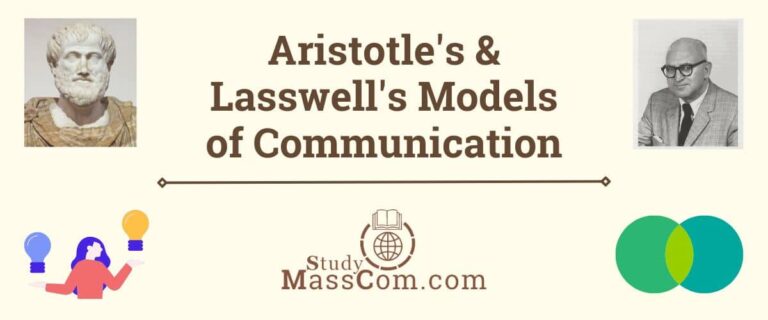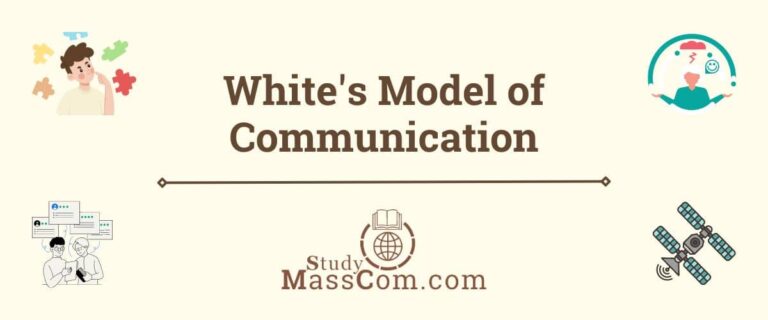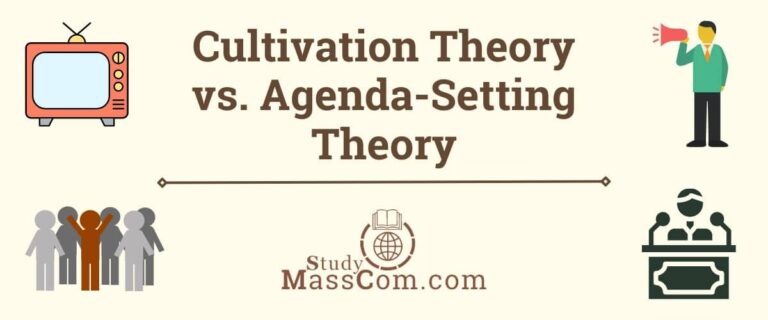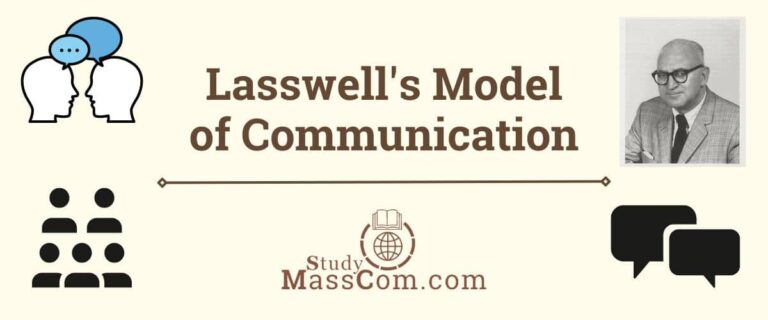Osgood-Schramm Model of Communication: Definition & Examples
Communication is an integral part of human interaction, facilitating the exchange of ideas, emotions, and information. Over the years, numerous models have been developed to understand the complexities of communication processes. One such model that has stood the test of time is the Osgood-Schramm Model, named after its creators Charles Egerton Osgood and Wilbur Schramm. This article aims to explore the Osgood-Schramm Model in detail, examining its components, applications, and criticisms within various communication contexts.

History of Osgood-Schramm Model of Communication
The Osgood-Schramm Model emerged in the 1950s, a period marked by growing interest in communication research and theory. Charles Egerton Osgood, a prominent psychologist known for his work on semantics and human cognition, collaborated with Wilbur Schramm, a pioneer in the field of communication studies, to develop a comprehensive model that could explain the intricacies of human communication.
Drawing from their respective backgrounds in psychology and communication studies, Osgood and Schramm sought to create a model that would capture the dynamic nature of communication while emphasizing key components such as sender, message, receiver, feedback, context, channel, and noise. Their collaborative efforts resulted in the formulation of the Osgood-Schramm Model, which has since become a cornerstone of communication theory.
Definition of Osgood-Schramm Model of Communication
The Osgood-Schramm Model of Communication is a theoretical framework developed by Charles Egerton Osgood and Wilbur Schramm to explain the process of human communication. This model posits that communication involves a dynamic interaction between a sender, message, receiver, feedback, context, channel, and noise. The sender encodes a message and transmits it through a chosen channel to the receiver, who decodes the message and provides feedback. Contextual factors such as the environment and cultural background influence how the message is interpreted. Channels can be verbal or nonverbal, while noise refers to any interference that disrupts the communication process. This model emphasizes the cyclical nature of communication, highlighting the importance of understanding various components and their interactions for effective communication to occur.
Read about Wilbur Schramm’s communication model.
Key Components of the Osgood-Schramm Model of Communication
The Osgood-Schramm Model comprises several interconnected components that collectively shape the communication process:
Sender
The sender, also known as the encoder, is the individual or entity initiating the communication process. They encode their thoughts, ideas, or emotions into a message that can be transmitted to the receiver. The sender’s role is crucial in determining the content, tone, and style of the message.
Message
The message is the content being communicated from the sender to the receiver. It can take various forms, including verbal (spoken or written words) and nonverbal (gestures, facial expressions, tone of voice) cues. The message encapsulates the sender’s intended meaning and is subject to interpretation by the receiver.
Receiver
The receiver, also known as the decoder, is the intended recipient of the message. They decode the message, extracting meaning from the symbols and cues transmitted by the sender. The receiver’s interpretation of the message is influenced by their perceptions, experiences, cultural background, and cognitive biases.
Feedback
Feedback is a crucial component of the communication process, representing the receiver’s response to the sender’s message. It provides valuable information to the sender about how their message was received and understood. Feedback can be verbal (spoken or written), nonverbal (gestures, facial expressions), or implicit (behavioral responses), and it plays a pivotal role in shaping subsequent interactions.
Context
Context refers to the environmental, situational, and cultural factors that influence the communication process. It includes elements such as the physical setting, social norms, cultural values, historical background, and relational dynamics between communicators. Context shapes the meaning of the message and influences how it is interpreted and perceived by the receiver.
Channel
The channel is the medium through which the message is transmitted from the sender to the receiver. It can be verbal (face-to-face conversation, telephone, radio) or nonverbal (body language, facial expressions). The choice of channel depends on various factors such as the nature of the message, the relationship between the sender and receiver, and the context of communication.
Noise
Noise refers to any interference or distortion that disrupts the communication process, leading to misunderstandings or misinterpretations of the message. Noise can be external (physical distractions, background noise), internal (mental distractions, cognitive biases), or semantic (language barriers, ambiguity). Minimizing noise is essential for effective communication to ensure that the intended message is accurately transmitted and understood.
Learn the simialrities and differences between Shannon-Weaver and Schramm’s models.
Diagram of Osgood-Schramm Model of Communication
The following diagram illustrates the key components and their interactions in the Osgood-Schramm Model:

Field of Experience in the Osgood-Schramm Model
In the Osgood-Schramm Model of Communication, the “Field of Experience” refers to the sum total of an individual’s personal experiences, cultural background, values, beliefs, attitudes, and social context that shape their interpretation of messages during the communication process. This concept emphasizes that communication is not just about the exchange of words or information but also about the subjective understanding and meaning-making by individuals based on their unique life experiences.
The Field of Experience plays a crucial role in the interpretation of messages because it influences how individuals perceive, understand, and respond to communication. People with different backgrounds and experiences may interpret the same message differently, leading to potential misunderstandings or miscommunication. For example, cultural differences, socioeconomic status, education level, and personal beliefs can all influence how individuals interpret messages and assign meaning to them.
Understanding the Field of Experience is essential for effective communication because it allows communicators to consider the diverse backgrounds and perspectives of their audience. By acknowledging and respecting the different experiences and cultural contexts of individuals, communicators can tailor their messages to be more relevant and meaningful to their audience. This can help bridge communication gaps, promote understanding, and foster better relationships between communicators and receivers.
Explore Newcomb’s ABX model of communication in detail.
Applications of the Osgood-Schramm Model of Communication
The Osgood-Schramm Model has found widespread application across various communication contexts, including interpersonal communication, mass communication, organizational communication, and public relations:
Interpersonal Communication
In interpersonal communication, the model provides insights into the dynamics of interactions between individuals. It underscores the importance of feedback, context, and channel selection in shaping the quality and effectiveness of interpersonal communication. The model’s emphasis on sender-receiver dynamics helps individuals navigate social interactions and build meaningful relationships.
Mass Communication
In mass communication, the Osgood-Schramm Model informs the production and dissemination of media messages to a diverse audience. It highlights the role of media channels in delivering messages to mass audiences and emphasizes the need for media producers to consider audience characteristics, preferences, and feedback when crafting messages. The model’s focus on feedback enables media organizations to assess the impact of their communication efforts on audience engagement and reception.
Check out the important Mass Communication Theories and Models.
Organizational Communication
In organizational communication, the model offers insights into how communication processes unfold within complex organizational structures. It underscores the importance of clear and effective messaging in facilitating coordination, collaboration, and decision-making within organizations. The model’s emphasis on context and noise helps organizations identify and address communication barriers that may hinder productivity and performance.
Public Relations
In public relations, the Osgood-Schramm Model informs strategic communication initiatives aimed at managing and shaping public perceptions. It underscores the role of feedback, context, and channel selection in designing persuasive messages that resonate with target audiences. The model’s emphasis on sender-message-receiver dynamics helps public relations practitioners craft messages that effectively convey organizational goals, values, and narratives.
Delve into the role of New Media in public relations.
Advantages of the Osgood-Schramm Model of Communication
The Osgood-Schramm Model of Communication offers several advantages that contribute to its usefulness in understanding and analyzing communication processes:
Comprehensive Framework
The model provides a comprehensive framework that incorporates multiple components of communication, including sender, message, receiver, feedback, context, channel, and noise. By considering these elements, the model offers a holistic perspective on communication dynamics.
Emphasis on Feedback
The Osgood-Schramm Model emphasizes the importance of feedback in the communication process. Feedback allows communicators to assess the effectiveness of their messages and make adjustments to improve communication outcomes. This focus on feedback promotes interactive and iterative communication exchanges.
Recognition of Context
The model acknowledges the significance of context in shaping communication interactions. Contextual factors such as cultural background, social norms, and environmental conditions influence how messages are perceived and interpreted. By considering context, communicators can tailor their messages to be more relevant and impactful.
Flexibility
The Osgood-Schramm Model is flexible and adaptable to various communication contexts and situations. Whether applied to interpersonal communication, mass communication, or organizational communication, the model’s framework remains relevant and applicable, allowing for a wide range of analyses.
Practical Applications
The model has practical applications in fields such as media studies, advertising, public relations, and organizational communication. By understanding the components of the model and their interactions, practitioners can develop more effective communication strategies, campaigns, and interventions.
Insight into Communication Dynamics
By examining the sender-message-receiver-feedback loop, the Osgood-Schramm Model offers valuable insights into communication dynamics. It helps elucidate how messages are transmitted, received, and interpreted, as well as the factors that influence communication effectiveness.
Predictive Power
The model’s framework can be used to predict communication outcomes based on the interaction of its components. By understanding how changes in one component affect the overall communication process, communicators can anticipate potential challenges and opportunities in their interactions.
In summary, the Osgood-Schramm Model of Communication offers several advantages, including its comprehensive framework, emphasis on feedback, recognition of context, flexibility, practical applications, insight into communication dynamics, and predictive power. These advantages make the model a valuable tool for understanding, analyzing, and improving communication processes in various contexts.
Read about the Agenda-Setting Theory and its advantages and disadvantages.
Disadvantages of the Osgood-Schramm Model of Communication
Despite its widespread acceptance and application, the Osgood-Schramm Model has faced criticisms from scholars and practitioners within the field of communication studies. While this model offers valuable insights into communication processes, it also has several limitations and disadvantages:
Oversimplification
Critics argue that the model oversimplifies the complexity of human communication by reducing it to a linear process of transmission and reception. In reality, communication is often nonlinear, iterative, and influenced by multiple factors simultaneously. By reducing communication to a linear process of transmission and reception, this model fails to capture the intricacies and nuances of real-life communication interactions.
Lack of Dynamism
The model portrays communication as a static and one-way process, with a clear sender-message-receiver-feedback loop. However, communication is often dynamic and nonlinear, involving multiple feedback loops and interactions between communicators. The model’s linear representation does not fully account for this dynamic nature of communication.
Limited Focus on Context
While the Osgood-Schramm Model acknowledges the importance of context in communication, critics argue that it does not adequately address the role of context in shaping communication interactions. They argue for a more nuanced understanding of context, including its role in shaping power dynamics, social identities, and cultural meanings in communication. Contextual factors such as cultural background, social norms, and environmental conditions play a significant role in influencing how messages are interpreted and understood, but the model’s treatment of context is relatively simplistic.
Lack of Emphasis on Power Dynamics
Critics also highlight the model’s limited treatment of power dynamics in communication, particularly in interpersonal and organizational contexts. They argue that communication is not always symmetrical, and power differentials between communicators can significantly influence the exchange of messages and the interpretation of meaning. The model’s focus on sender-receiver interactions does not fully capture these power dynamics.
Inadequate Treatment of Feedback
Some critics argue that the model’s treatment of feedback is limited, focusing primarily on the receiver’s response to the sender’s message. They advocate for a broader understanding of feedback that considers the mutual exchange of information, the role of context in shaping feedback, and the iterative nature of communication. The model primarily focuses on the receiver’s response to the sender’s message, overlooking the mutual exchange of information and the role of context in shaping feedback. This narrow view of feedback fails to capture its complexity and significance in communication interactions.
Lack of Cultural Sensitivity
The model’s emphasis on sender-message-receiver interactions may overlook the cultural differences and diverse backgrounds of communicators. Cultural sensitivity is essential in communication, as cultural norms and values can significantly influence how messages are perceived and interpreted. The model’s simplistic representation may not adequately account for these cultural variations.
In summary, while the Osgood-Schramm Model of Communication provides a useful framework for understanding communication processes, it also has several disadvantages, including oversimplification, lack of dynamism, limited focus on context and power dynamics, inadequate treatment of feedback, and lack of cultural sensitivity. These limitations highlight the need for a more nuanced and holistic understanding of communication phenomena.
Read the differences between Two-Step Flow and Multi-Step Flow theories.
Examples of the Osgood-Schramm Model of Communication
Examples of the Osgood-Schramm Model of Communication can be found in various everyday scenarios, as well as in professional and academic contexts. Here are a few examples illustrating how the components of the model interact in different communication situations:
Face-to-Face Conversation
Imagine two friends, Sarah and John, having a face-to-face conversation at a café. Sarah (the sender) shares a story about her recent vacation (the message) with John (the receiver). As Sarah speaks, John provides verbal and nonverbal feedback, such as nodding, smiling, and asking questions, indicating his engagement and understanding of the message. The context of the café environment influences their interaction, and noise from nearby conversations may occasionally disrupt their communication flow. The channel of communication is verbal, with Sarah speaking and John listening.
Television Advertisement
Consider a television advertisement for a new smartphone. The company (sender) creates a visually appealing commercial showcasing the smartphone’s features and benefits (message). The advertisement is broadcast on television (channel) and reaches a broad audience (receiver). Viewers provide feedback through ratings, comments on social media, or purchasing the product, which the company uses to evaluate the effectiveness of the advertisement. The noise in this context could include distractions such as other advertisements, background noise, or competing stimuli.
Check out the DAGMAR and AIDA models of advertising.
Academic Lecture
In an academic lecture, the professor (sender) delivers a lecture on a particular topic (message) to a room full of students (receivers). The lecture is delivered verbally, with visual aids such as slides or handouts (channel). Students take notes, ask questions, and engage in discussions, providing feedback to the professor. The context of the lecture hall, as well as the students’ prior knowledge and interests, shapes their understanding of the material. Noise in this context could include distractions such as outside noises, technical difficulties, or lack of clarity in the professor’s delivery.
Workplace Meeting
During a workplace meeting, the team leader (sender) presents a new project proposal (message) to the team members (receivers). The meeting takes place in a conference room (context), and the communication occurs verbally (channel), supplemented by visual aids such as slides or documents. Team members provide feedback through questions, suggestions, and discussion, shaping the direction of the project. Noise in this context could include interruptions, conflicting opinions, or distractions from electronic devices.
These examples demonstrate how the components of the Osgood-Schramm Model—sender, message, receiver, feedback, context, channel, and noise—interact in different communication scenarios, highlighting the model’s applicability in various contexts.
Learn about the Uses and Gratification Theory in detail with us.
Conclusion
Osgood-Schramm Model of Communication provides a comprehensive framework for understanding the dynamics of human communication. Its emphasis on sender-message-receiver dynamics, feedback, context, channel, and noise has been influential in various communication contexts. However, the model is not without its criticisms, particularly regarding its simplistic representation, limited focus on context and power dynamics, and inadequate treatment of feedback. Despite these criticisms, the Osgood-Schramm Model continues to serve as a valuable tool for analyzing and studying communication phenomena in diverse social, cultural, and organizational contexts. By understanding the complexities of communication processes, we can enhance our ability to convey messages effectively.
Explore the essential steps in TV news production.
FAQs
The Osgood-Schramm Model of Communication is a theoretical framework developed by Charles Egerton Osgood and Wilbur Schramm in the 1950s. It describes communication as a dynamic process involving a sender who encodes a message, a channel through which the message is transmitted, a receiver who decodes the message, and feedback that completes the communication loop. The model also incorporates elements such as context, noise, and the field of experience, highlighting the complexity of human communication interactions.
An example of the Osgood-Schramm Model of Communication is a telephone conversation between two friends. The sender, Friend A, initiates the communication by encoding a message (e.g., “Hey, how are you?”). The message is transmitted through the telephone channel to the receiver, Friend B. Friend B decodes the message and responds with feedback (e.g., “I’m doing well, thanks for asking!”). The communication loop is completed as Friend A acknowledges the response. Contextual factors, such as the time of day and the friends’ previous interactions, as well as potential noise from background sounds, may influence the communication process.






